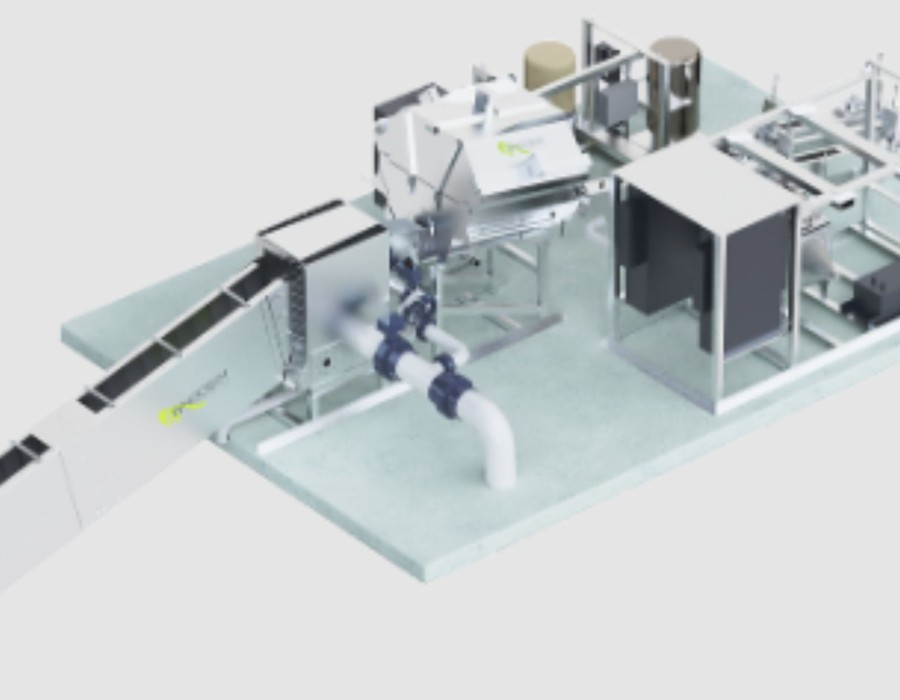What happens when aquatic species are cut off from their natural migration routes? The answer: disrupted ecosystems, declining fish populations, and economic losses for industries dependent on fisheries. Dams, culverts, and other man-made structures are essential for hydroelectric power and irrigation, but they present significant barriers for migratory species like salmon, eel, and sturgeon. According to NOAA, over 1,000 species of fish in U.S. waterways face challenges navigating these barriers¹.
Ensuring proper fish passage isn’t just about saving fish—it’s about restoring the delicate balance that keeps ecosystems healthy and communities thriving. At Whooshh Innovations, we’re committed to exploring and implementing the best fish passage options for sustainable migration and ecosystem restoration.
Table of Contents
- Why Are Fish Passage Options Critical?
- What Defines the Best Solutions?
- Downstream Fish Passage Solutions: Why They Matter
- Case Study: Bridging the Gap at Columbia River Basin
- Conclusion: Building Smarter Systems for the Future
Why Are Fish Passage Options Critical?
Fish passage systems are game-changing tools for addressing the environmental disruptions caused by barriers like dams. Migration is critical for fish species to spawn, feed, and complete their life cycles. When these migration paths are disrupted, fish populations decline, throwing ecosystems out of balance.
This has far-reaching consequences. Beyond ecological damage, communities reliant on fisheries for economic and cultural reasons experience financial strain. According to the American Fisheries Society, restoring fish paths in blocked waterways can generate up to $4 billion in economic benefits annually².
Now more than ever, with the rapid expansion of infrastructure and changing climate conditions, we must innovate and prioritize fish passage solutions that can sustain aquatic populations while addressing human needs.
What Defines the Best Solutions?
So, what are the best fish passage options available today? The answer lies in innovation, adaptability, and sustainability. Traditional methods like fish ladders and bypass channels are still widely used, but they often fall short of addressing modern challenges. These systems focus on strong-swimming species like salmon while leaving weaker swimmers and smaller fish at a disadvantage.
Cutting-edge solutions, like Whooshh’s Passage Portal™, integrate AI recognition, pneumatic transport systems, and modular designs. These systems adapt to different site conditions and species, ensuring inclusivity for all types of aquatic life. Additionally, by using minimal water and energy, they balance ecological responsibility with operational efficiency.
A strong passage solution must not only facilitate fish movement but also provide actionable data. Innovative systems equipped with real-time monitoring and AI analysis give stakeholders a clearer picture of migration success rates and population health, enabling better conservation and management.
Downstream Fish Passage Solutions: Why They Matter
While upstream migration often takes center stage, downstream migration is just as critical for maintaining healthy populations. Juvenile fish face significant risks when migrating downstream, especially when navigating hydropower turbines, strong currents, and hazardous barriers. Without proper downstream fish passage solutions, these young fish may not survive to return as adults.
At Whooshh Innovations, our downstream solutions focus on guiding fish safely past turbines and other dangers. Technologies like pneumatic tube systems allow fish to bypass hazardous areas swiftly and stress-free, increasing survival rates. In addition, real-time monitoring ensures proper flow management and minimal impact on fish health.
These solutions are particularly relevant for hydropower operators who must meet environmental regulations while maintaining efficient energy production. By balancing energy needs with effective fish passage, we help operators achieve sustainability goals without sacrificing operational performance.
Case Study: Bridging the Gap at Columbia River Basin
The Columbia River Basin has long been a hotspot for salmon migration and hydropower production, but dams have presented significant challenges for fish passage. Over the years, innovative technologies have made a measurable impact. For example, Whooshh Innovations implemented its Passage Portal™ system at several sites, achieving over 95% passage efficiency for migratory fish³.
This success wasn’t just about moving fish—it was about rebuilding ecosystems. Salmon runs, once at risk of collapse, showed signs of renewed health. At the same time, the integration of smart systems allowed dam operators to conserve water and optimize power generation, proving that environmental conservation and industrial goals can coexist.
Conclusion: Building Smarter Systems for the Future
The challenges of fish migration demand smarter, more adaptable solutions. The best fish passage options aren’t just about getting fish from point A to point B—they’re about protecting biodiversity, balancing hydropower needs, and building resilient ecosystems.
At Whooshh Innovations, we’re proud to provide cutting-edge technology that redefines fish passage. From pneumatic transport systems to AI-powered monitoring, our solutions are designed to deliver measurable results for both aquatic ecosystems and human stakeholders. Ready to transform your fish passage strategy? Let’s create a smarter, more sustainable future together.





Comments